The Week On-Chain (Week 3, 2021)
BTC has lost some ground over the past week, losing almost 7% of its value. But despite a possible further correction, long-term on-chain metrics remain bullish.

Announcing Our Latest Newsletter: Uncharted
We have recently started a brand new bi-weekly newsletter, Uncharted. This newsletter covers BTC from both an on-chain and off-chain data perspective, and uses beautiful charts and brief commentaries to give readers an intuitive snapshot of what is happening in the markets.
Check out Uncharted on our Substack, and subscribe now!
Bitcoin Market Health
Bitcoin had a slow week for the first time in over a month, losing almost 7% of its value. After starting the week at $38,360, it rapidly declined on Monday morning, reaching a low of just over $30,500. In the middle of the week, it almost reached $40k before declining once again, ending the week at $35,775.
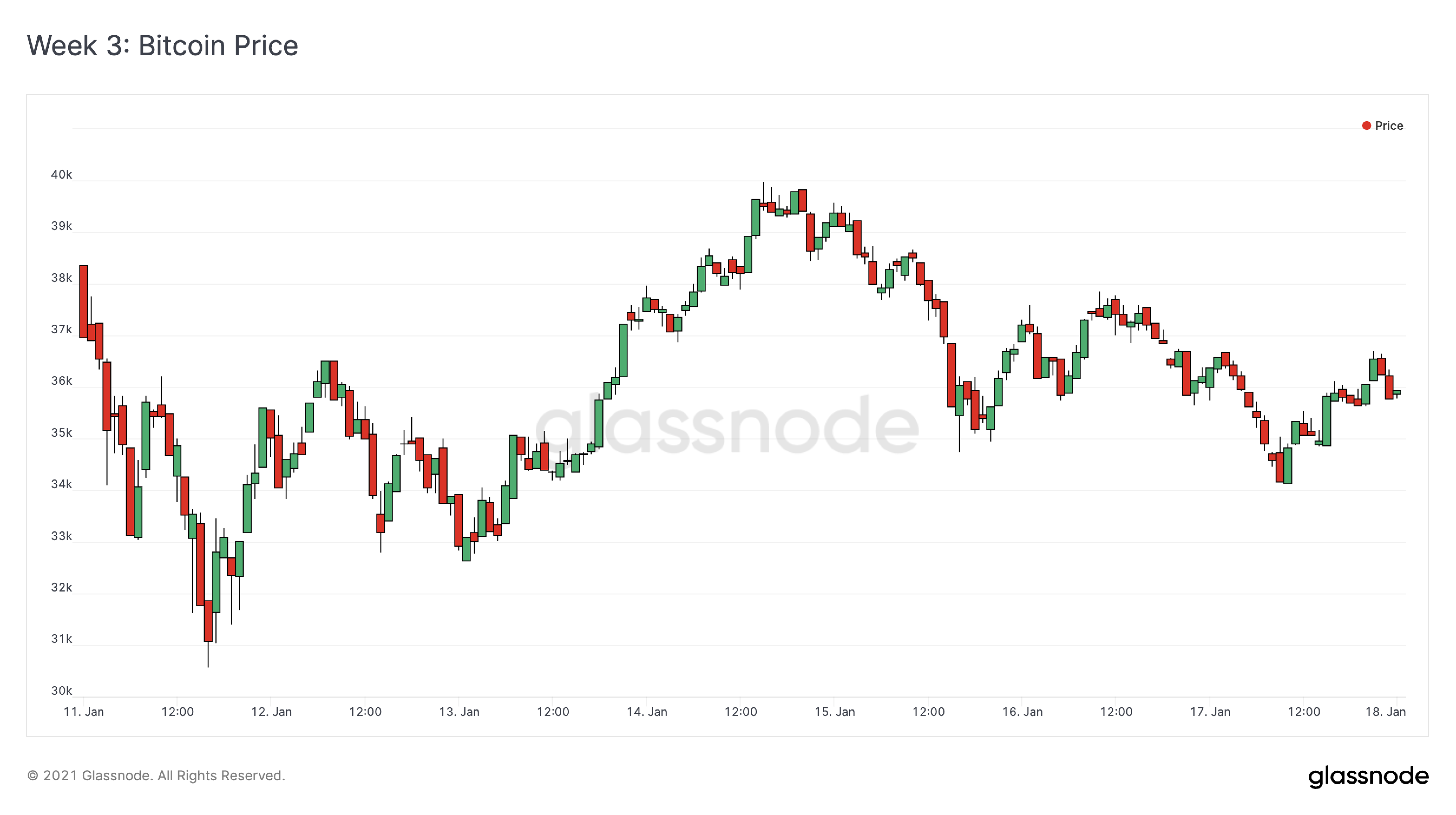
For the Bulls
The number of BTC held in accumulation addresses has exceeded 2.7 million - a 17% increase in a single year. Accumulation addresses are addresses (excluding miner and exchange addresses) which have only ever received BTC and have never spent them.

This increase highlights the massive supply restriction that is occurring in the BTC market, with almost 15% of the total supply held in these addresses. When combined with the general decrease in bitcoin's liquid supply and the number of lost coins, this leads to an even more limited supply, which is helping BTC maintain the highest prices it has ever seen.
For the Bears
Despite bitcoin's strong on-chain fundamentals and its impressive gains as of late, a further correction may still be in order. BTC's entity-adjusted SOPR is still at very high levels, and has not reset back to 1 in several months.
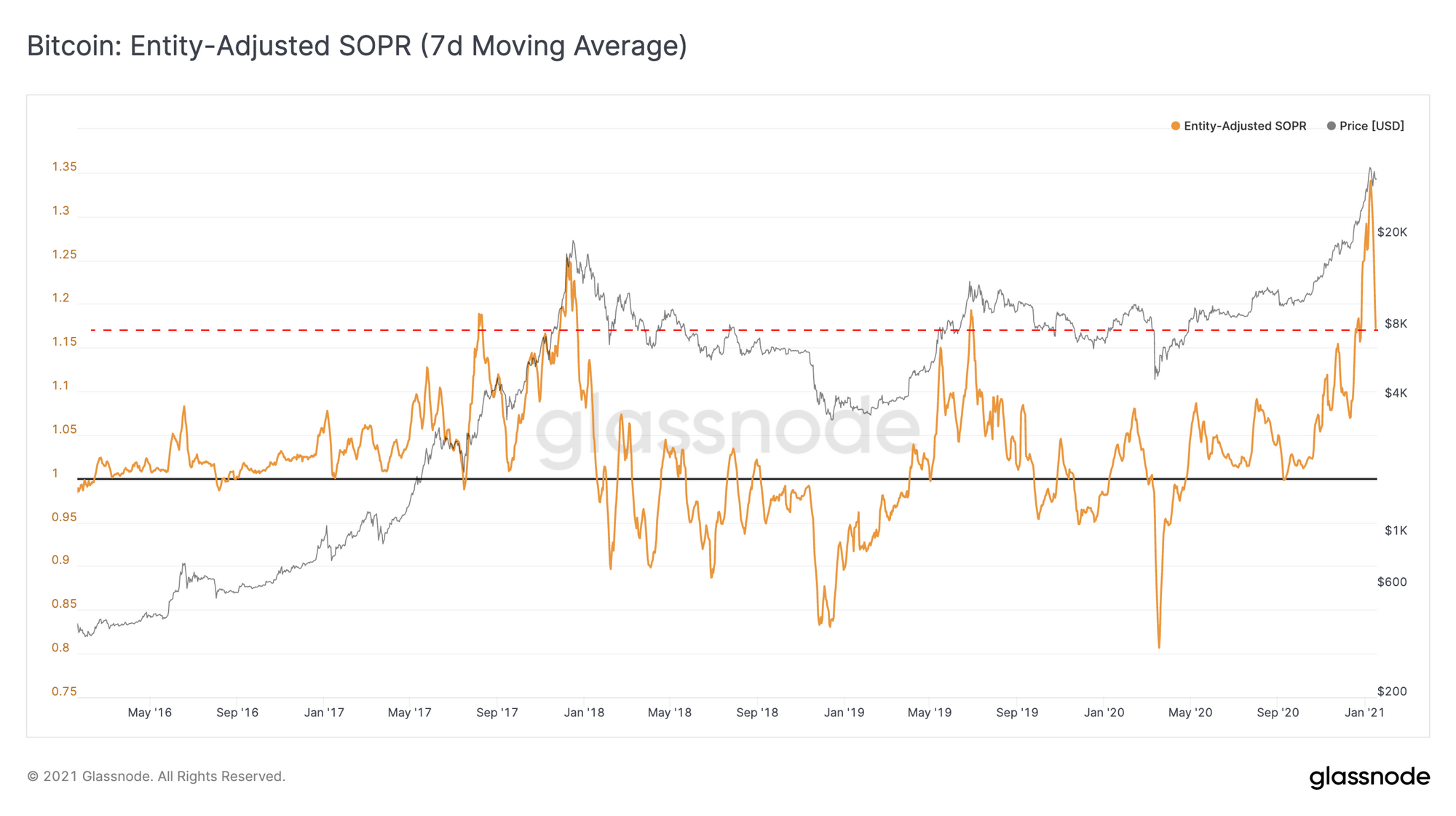
A reset in SOPR usually precedes price stabilization and paves the way for the next bull run. With SOPR levels this high, even if we see some upside now, further (healthy) pullbacks in the mid-term are not unlikely. With that said, overall on-chain metrics remain long-term bullish for BTC.
A Comment from Willy Woo
Woo's Take: Traders should prepare for a worst case wick down to a price floor of approximately $29k under current capital flow models. However, with whale numbers at an all time high, we are seeing a very strong indicator that we are still early in this bull market.
Bitcoin is now in a consolidation band with strong fundamentals of whale buyers supporting the rally to current levels.
The chart below shows my most responsive model for determining the fundamental floor price of BTC. It’s based on investor capital flowing into the network. This model has backtraced successfully over the 12 years of Bitcoin’s bull markets and is proprietary to The Bitcoin Forecast.
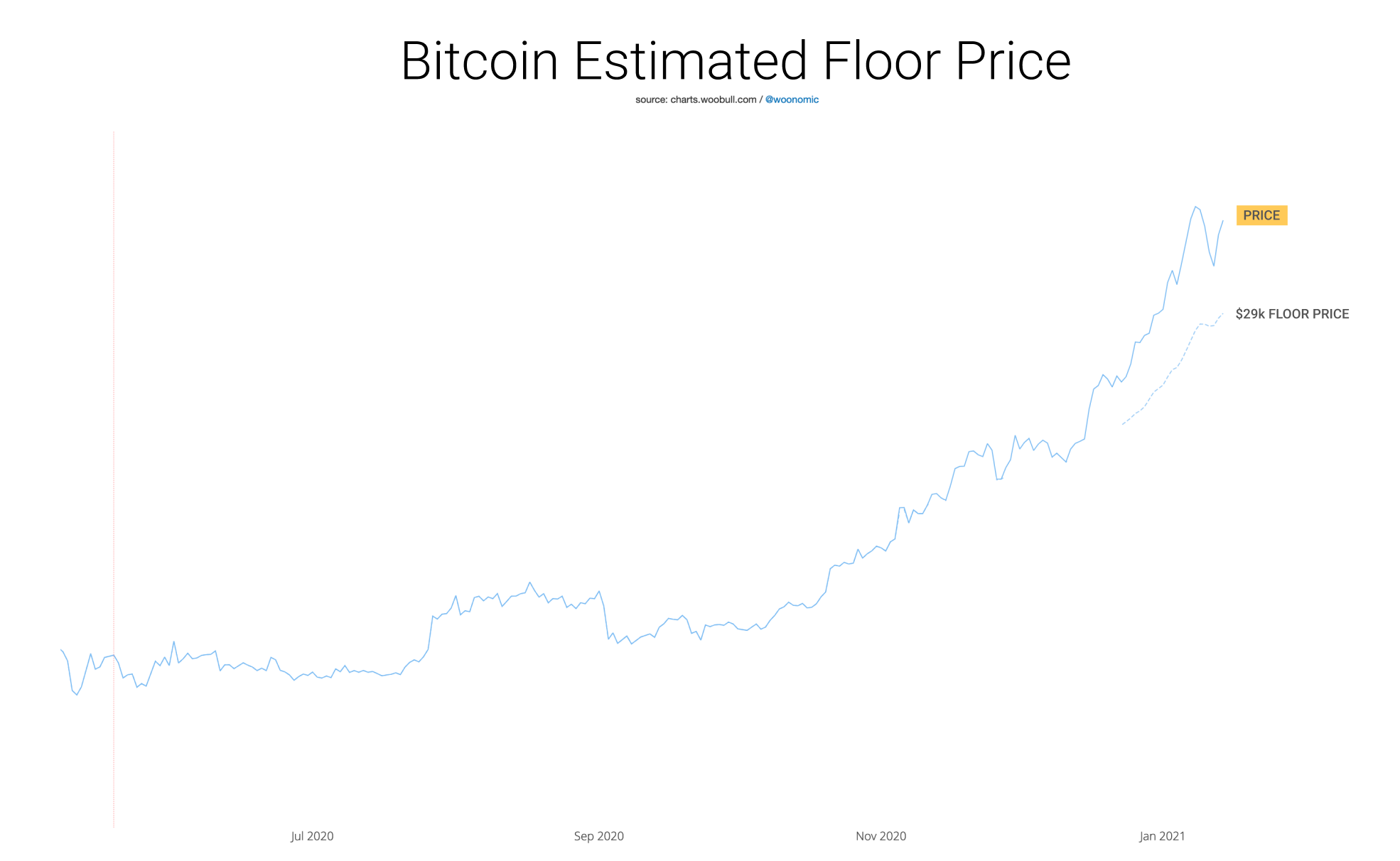
The floor presently sits at $29k. While I don’t necessarily expect price will wick downwards that low, traders should prepare for this as worse case scenario. This model tells us we are trading in a regime where a pull-back would be contained within a range of 20%-33% from highs (using daily candle closes).
Read more from Willy Woo in his newsletter, The Bitcoin Forecast.
Altcoin Feature: Over 81% of LINK is Held by the Top 1% of Addresses
The proportion of LINK held by the top 1% has reached a new all-time high of over 81%, after steadily climbing for the past several years. Even as LINK smashes through previous price records, its top holders appear to be acquiring more and more of this high-performing asset.
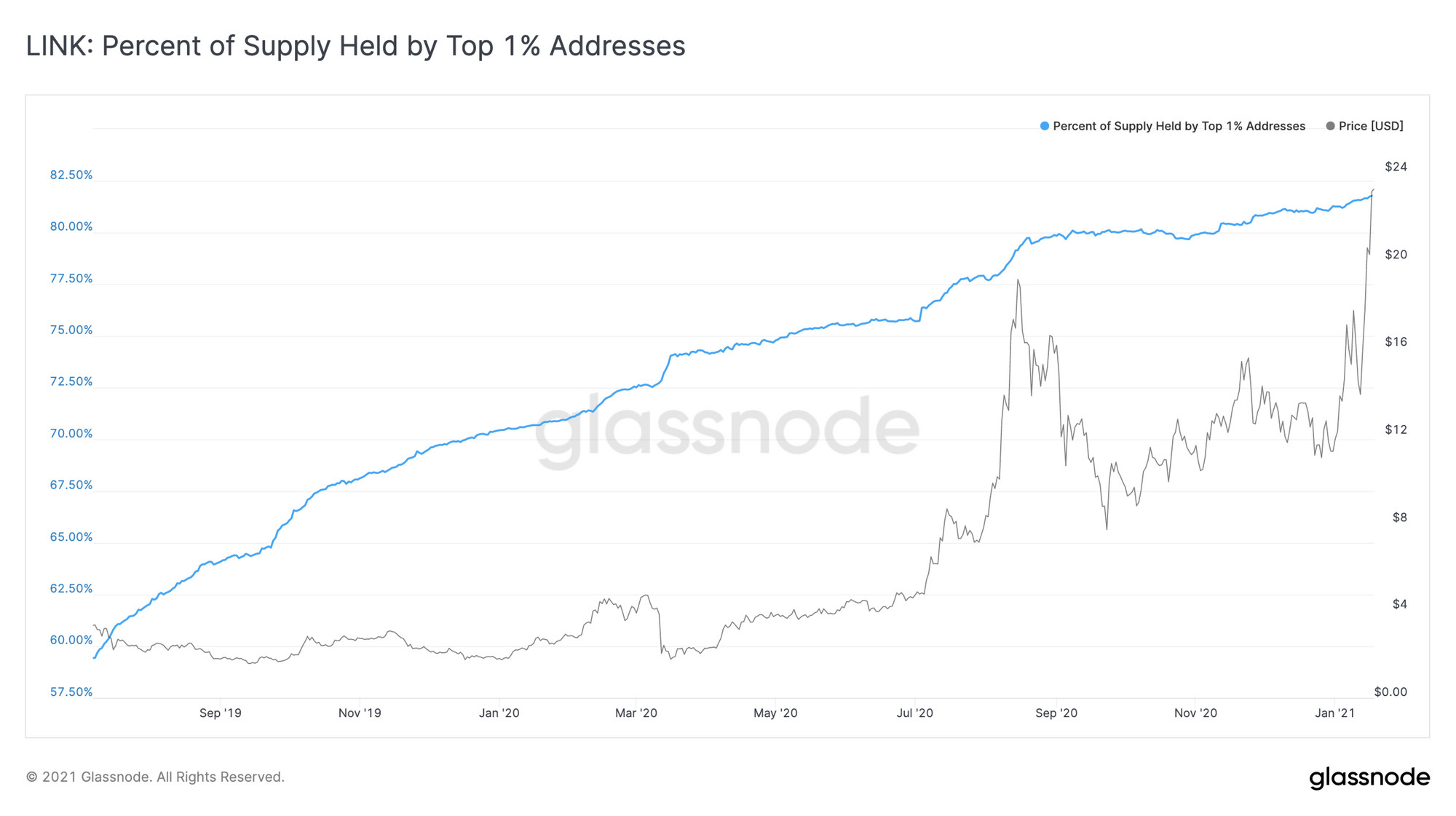
With LINK up over 46% across the past week, demand for the asset appears to be higher than ever. Over the past several months, the token's circulating supply has increased by over 50 million units (14%) due to the protocol's parent company selling some of its share of tokens. But despite this increase in supply, LINK continues to increase in price while simultaneously becoming more concentrated.
The continued concentration of supply suggests that, even with the available supply increasing, LINK's top holders are still bullish on the token, and are continuing to acquire more. This is a positive sign for LINK, as it demonstrates ongoing support and bullish sentiment from the existing community.
Which altcoins would you like to see us cover in future editions of The Week On-Chain? Let us know on Twitter.
Weekly Feature: Controversy over BTC's Stock to Flow Model
The much-debated stock to flow (S2F) model of valuing BTC has seen some renewed controversy as of late, with two camps forming regarding whether or not the model is, in fact, valid and predictive.
S2F claims to predict bitcoin's price based on a ratio which compares the existing supply of BTC with how much is entering circulation. For the past decade, it has more or less predicted BTC's price movements, and the model has forecast continued increases as the supply of bitcoin continues to dry up.
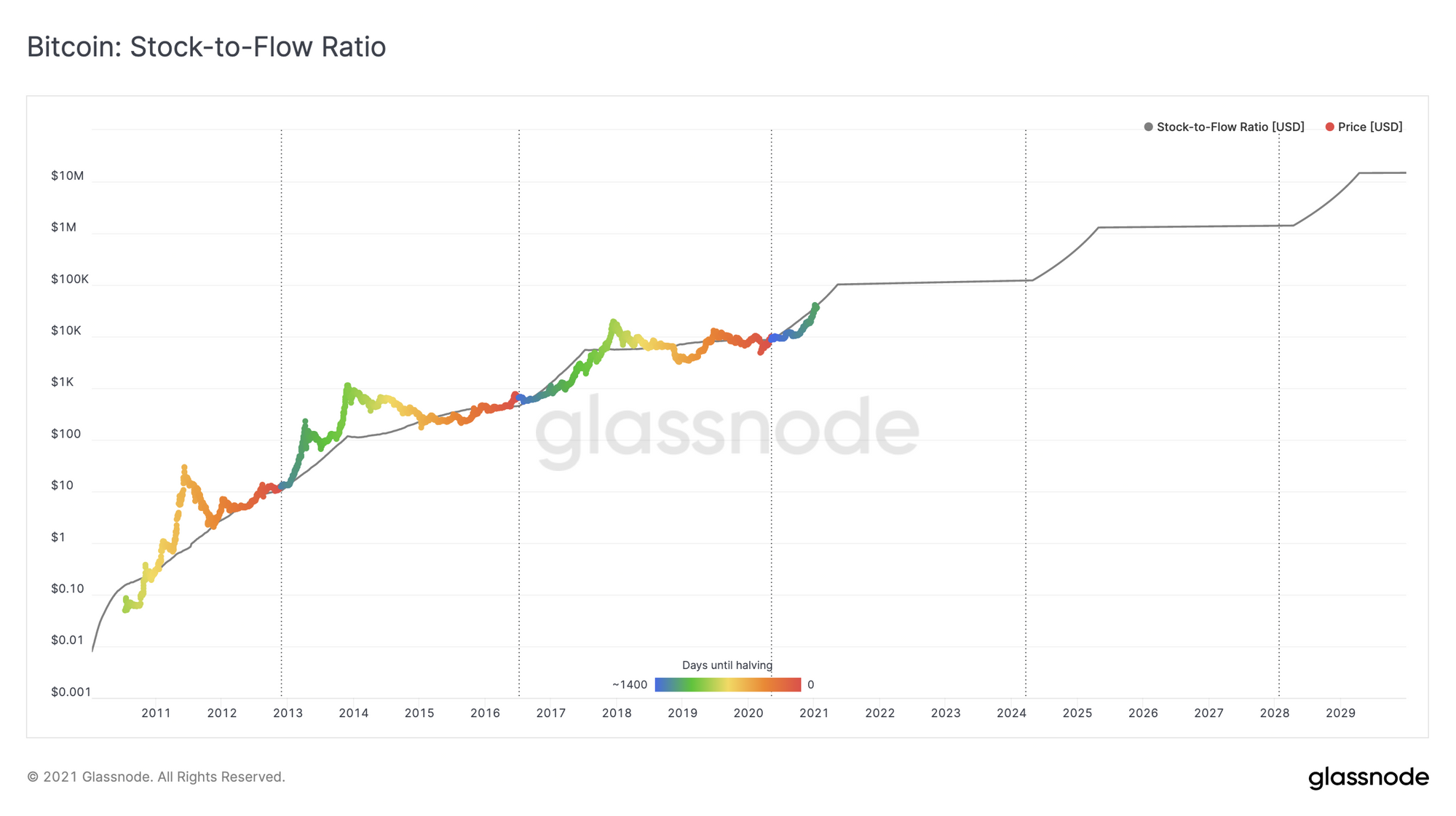
However, despite having been historically predictive, the model, introduced by anonymous crypto investor PlanB, has been shot down by many. PlanB has recently claimed that S2F is "on track... like clockwork", but other analysts claim that it is baseless.
Analyst Alex Krüger is one of the model's detractors, stating: "It is nonsensical to think that bitcoin S2F... can be used to predict price." He claims that S2F is based on a "spurious relationship" between price and scarcity, an opinion which seems wise when the model is extended further into the future.
By 2045, S2F estimates a price of $235 trillion per bitcoin, with the price eventually converging to infinity as bitcoin’s flow approaches zero. As identified by many analysts, this kind of projection is clearly unrealistic, and creates damaging expectations for the price of BTC.
Cory Klippstein agrees with this view, stating that: "It's extremely important to be bullish for the right reasons. Otherwise you'll have weak hands when your belief is proven false."
Recap of my issues with the S2F and S2FX models of @100trillionUSD:
— Cory SwanBitcoin.com 🦢 (@coryklippsten) September 25, 2020
It's extremely important to be bullish for the right reasons. Otherwise you'll have weak hands when your belief is proven false.
1/
This does not mean that BTC will not increase significantly in price in the future - but it does paint a valid warning about the dangers of relying on models which are subject to selection bias in their fundamental basis. As such, while investors can remain bullish for the time being, models like S2F should be examined and applied with caution.

- Lesen Sie diesen Artikel jetzt auf Deutsch bei unserem offiziellen Partner Bitcoin2Go
- Follow us and reach out on Twitter
- Join our Telegram channel
- For on–chain metrics and activity graphs, visit Glassnode Studio
- For automated alerts on core on–chain metrics and activity on exchanges, visit our Glassnode Alerts Twitter
